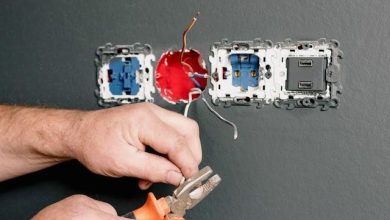5 Ways You Can Do to Improve Wifi Speed

Slow connection speed could be caused by a variety of factors. Wireless transmissions can be impacted by physical obstacles like walls and floors.
Connection speed is also influenced by the distance between the device and the access point and the number of devices connected to your Wi-Fi network. The performance of your router can be affected by even little changes, such changing the height of the router above the ground.
The location of the router, the technology, and the devices linked to it are the three key aspects that affect how quickly your Internet connection operates. Here are simple ways for you to improve your Wifi speed:
RESTART YOUR MODEM AND ROUTER
Between your home network and your internet service provider, your modem converts internet signals. A power cycle is a fantastic place to start troubleshooting if your internet is playing up because it frequently resolves connectivity issues. Plug in your modem or wifi gateway after unplugging it for 30 seconds. The modem can fix any bugs
Afterward, if you have a solo router, repeat the procedure. A power cycle cleans your router’s memory and provides it a fresh start on activities that were previously slowing it down, just like with the modem.
Turn off the WiFi on all of your wireless devices at this point. After a brief delay, turn Wi-Fi back on. Check to see if your connection gets stronger by allowing these devices to rejoin.
Turning your home networking equipment off and on again may seem simple, but it can give your network a significant boost. Rebooting your equipment at least once per few months is something we advise doing frequently.
PLACE YOUR ROUTER TO A BETTER LOCATION
Wi-Fi is only wireless, so factors affecting its connection speed include distance, obstructions (such walls, floors, and ceilings), electronic interference, and the quantity of individuals using the network. These factors collectively slow down Wi-Fi connection speed.
Place the wireless router on the main floor of your home, away from walls and other obstacles, for the strongest signal. Positioning it off the ground and above the furniture is ideal. Keep it away from other electronics like cordless phones, microwaves, and baby monitors that could interfere with it. The antennas could also be pointed perpendicularly, one horizontally and one vertically.
OPTIMISE YOUR SETTINGS
Your router should be able to switch between two radio frequencies, 2.4 GHz (the older standard) and 5 GHz, if it is still quite new (the newer standard). Wireless routers with intelligence can select the appropriate frequency for you and your surroundings. 14 channels at 2.4 GHz and 30 channels at 5 GHz are available on each frequency. To find the best option, you can check your wireless router’s settings to see if it automatically switches between channels and frequencies.
Additionally, you should confirm that your wireless router’s firmware and driver upgrades are current. Although many more recent routers have an update mechanism built in, you might need to access your router’s settings to manually initiate an update or go to the website of the company that makes your device to find bug fixes.
LIMIT YOUR CONNECTIONS
Disconnect any useless devices if you’re using up all your bandwidth. Your network’s connections should only be necessary things.
The quickest way to disconnect unnecessary devices is to reboot your router and change your Wi-Fi passwords. Then, on each device you currently use, you must re-login to your network using the new password. All superfluous connections, such as the backup cell phone you keep on that is still silently downloading updates, will be deleted using this technique.
EXTEND REACH
If your router is in the ideal spot but you still have slow speeds or poor connectivity in other parts of your home, you may need to install a device that can extend the range of your network.
You can use a variety of tools to expand the range of your network, including, Wi-Fi boosters, Wired access points, Powerline Extender, and Mesh Wifi systems.
Talk to your Internet service provider to confirm that you are paying for the speed you require. You might not have the plan that is the greatest fit for your connectivity needs because different providers offer varying speeds. Make sure you compare different internet bundle plans if you are ready to upgrade.




